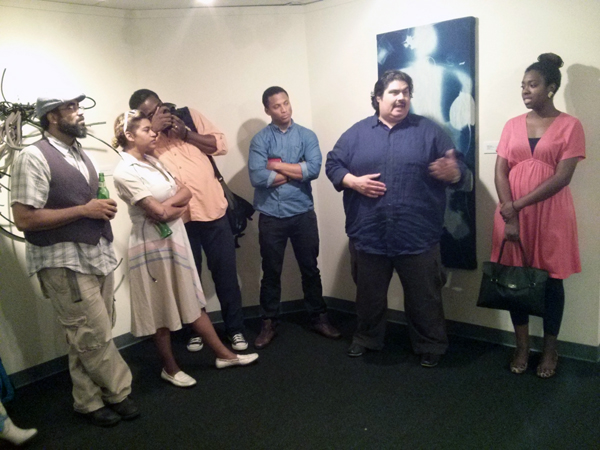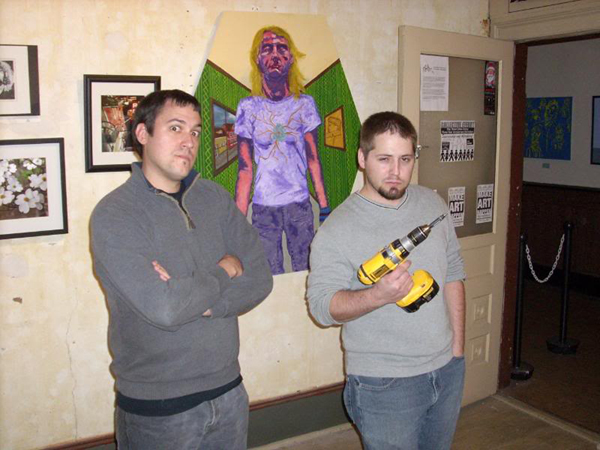
Macon needs more artist collectives
Members of the Smoke School of Art Collective speak at the gallery talk for “Pack a Pistol” at the Tubman Museum.
In 2004, I co-founded an artist collective that went on to have exhibitions in Macon and throughout Georgia for more than six years. We called ourselves the “Three Cities Group Artist Collective,” and it was one of the most rewarding experiences of my life.
While attending the opening reception for “Pack a Pistol” at the Tubman Museum, memories of those years flooded back to me. Members of the Smoke School of Art Collective offered a fascinating gallery talk during the reception, which spurred my fit of nostalgia. The Smoke School, comprised of professors and students and professional artists ranging in age from mid 20s to early 50s, reminded me of the power of being part of a collective.
One of the motivations of the Smoke School’s formation was to create a community of artists who would challenge and support each other. The result is stronger work by all the participating artists. The story seemed familiar because creating a community of artists was a core reason Michael Marks, Mark Watkins and I began the Three Cities Group. The current art scene in Macon would benefit from more of this behavior from local artists.
During the reception, I had the chance to talk to a few of the Smoke School artists. Christopher Hutchinson, whom I previously met in 2010 at his gallery in the Mattress Factory Lofts in Atlanta, talked to me about the group’s efforts to explore the possibilities of art made by African Americans. Being a rural-born Caucasian, I told him confessed that I didn’t always know how to begin that conversation in Macon. He referred me to two moments in popular culture from the television shows “Good Times” and “The Cosby Show.” According to Hutchinson, understanding of “black art” (specifically, visual art) in current African American culture begins and ends with the elongated and colorful figures of J.J. Evans, the aspiring artist character famous for the phrase “Dy-no-mite!” from “Good Times.”
The conversation was insightful and it offered a glimpse into the discourse shared at weekly meetings of The Smoke School of Art. This is the kind of discourse that many artists lack after college, and even more so, if they never attended college. (Some of Macon’s best artists are not college graduates.) I’m often asked what can be done to strengthen the artist community in Macon, and some of those answers are in services. We need professional developments, entrepreneurial incentives and affordable studio and living space for creatives. But those are big picture, policy items.
Michael Marks (left) and James Sammons during the installation of a Three Cities exhibition at Macon’s Contemporary Arts Exchange.
On a grassroots level, what our artist community needs is to sit down together and talk about art. We need critique groups and DIY collectives that aren’t necessarily non-profit organizations or for-profit ventures. Artists need to create discourse with one another, to push each other to make better work and to combine forces to make great things happen.
I credit a large portion of my career to my time with the Three Cities Group, and I’d like to see more artist collectives in Macon. I hope some of the artists who were at Friday’s opening were paying attention. I hope they noticed the camaraderie of the artists from the Smoke School, and I hope it made them a little jealous. I hope it inspires them to band together and form some new collectives. The whole community would benefit.
(There are a couple of collectives in Macon now–Contemporary Arts Exchange, for example–and I applaud their efforts. My plea for more is not meant to disparage those that already exist.)
Recent Content
-
Artsarticle ·
-
Artsarticle ·
-
Artsarticle ·


